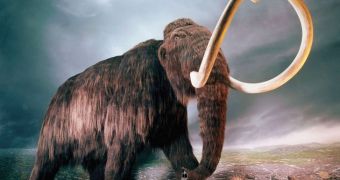A recent paper in the international academic research journal Boreas sheds new light on the life of mammoths and mastodons that inhabited present day Greater Cincinnati. The focus is on these animal's behavior and dietary preferences.
The paper, authored by a team of researchers working with the University of Cincinnati in the US, makes a case of how, according to evidence at hand, these ancient creatures were sort of like the hipsters of the Ice Age.
Thus, they came to live in the Greater Cincinnati area long before many other creatures showed up in this region at the end of the last ice age, and very much liked to keep to themselves and spend their time in a few carefully-chosen hotspots, specialists say.
Besides, it appears that, despite the fact that they inhabited the same area of present day US, mammoths and mastodons in the Greater Cincinnati almost never came into contact with one another. On the contrary, each species roamed a few select patches of land.
According to Brooke Crowley, an assistant professor of geology and anthropology, mammoths and mastodons inhabited one area or another depending on their dietary preferences. The first preferred grasses, whereas the latter were big fans of tree leaves.
Consequently, mammoths were a fairly common sight at the edge of retreating ice sheets, were grass was rather easy to come by. Mastodons, on the other hand, preferred living in the proximity of ancient forests, where leaves were abundant.
“Based on our data, mammoths and mastodons seemed to have different diets and lived in different areas during their lives. This is important because it allows us to understand how species in the past lived and interacted,” says Brooke Crowley.
Interestingly enough, it looks like these ancient creatures were surprisingly attached to their home and remained in an area of their choice all year-round. This contradicts previous assumptions that mammoths and mastodons were both nomadic species.
As detailed in the journal Boreas, Brooke Crowley and colleagues base their claims concerning the behavior and diet of mammoths and mastodons that used to inhabit the Greater Cincinnati on data collected while analyzing teeth belonging to such animals.
The three elements that the researchers focused on while analyzing the teeth were carbon, oxygen, and strontium. Of these, carbon serves as an indicator of an animal's diet. Oxygen and strontium, on the other hand, shed light on climatic conditions and traveling behavior.
“Strontium reflects the bedrock geology of a location. If an animal grows its tooth in one place and then moves elsewhere, the strontium in its tooth is going to reflect where it came from, not where it died,” specialist Brooke Crowley explains.

 14 DAY TRIAL //
14 DAY TRIAL //